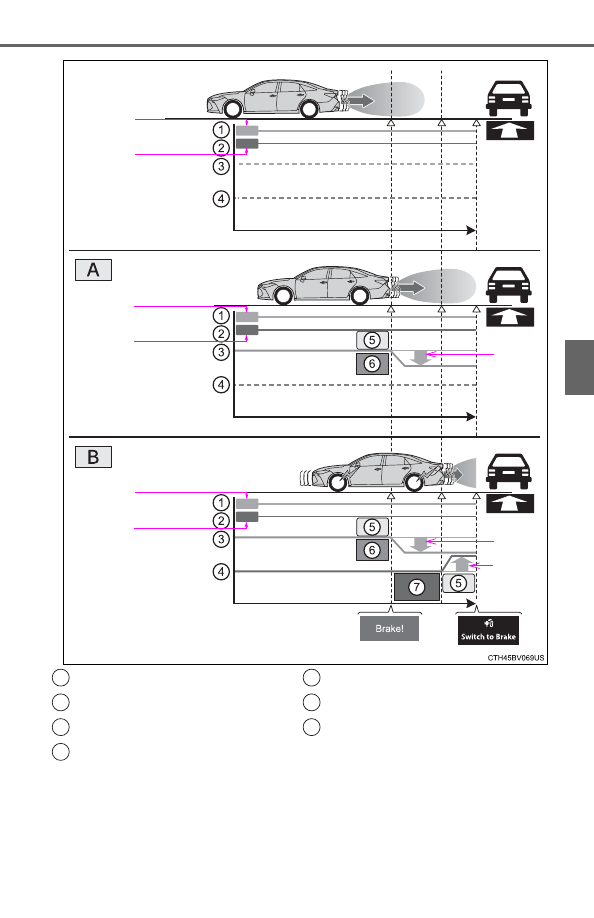Toyota Avalon (2019 year). Manual - part 19

289
4-5. Using the driving support systems
4
Dr
ivi
ng
On
Off
Time
Down
On
Off
Time
On
Off
Time
Down
Up
Accelerator pedal
Brake pedal
Engine output
Braking force
Start of control
High possibility of a collision
Extremely high possibility of a
collision
1
2
3
4
5
6
7